#Luciana Arrighi
Explore tagged Tumblr posts
Photo
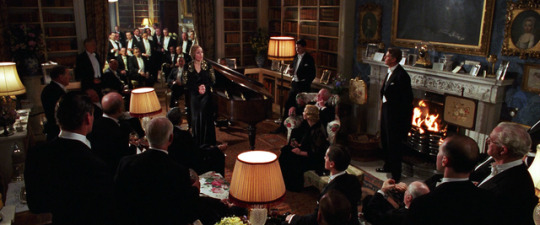
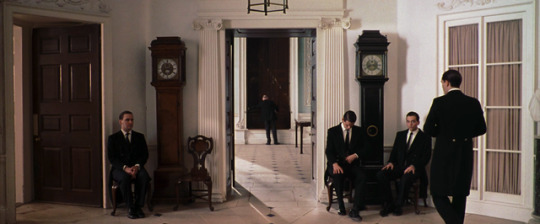



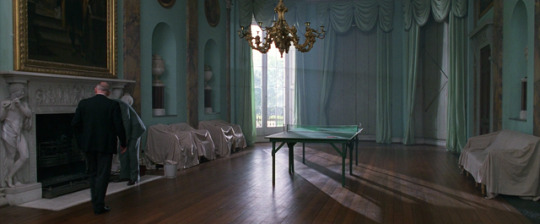

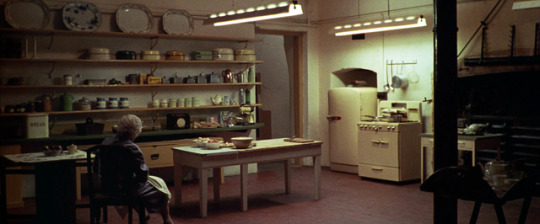
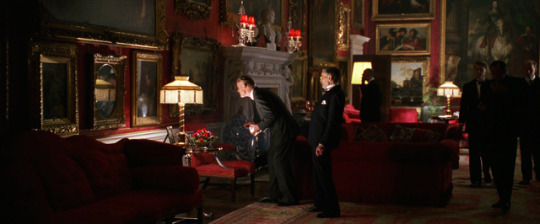

The Remains of the Day (James Ivory, 1993).
#the remains of the day#james ivory#tony pierce-roberts#andrew marcus#luciana arrighi#jenny beavan#anthony hopkins#the remains of the day (1993)#kazuo ishiguro#sesión de madrugada#sesiondemadrugada
171 notes
·
View notes
Text


Howards End (1992, James Ivory)
11/11/2024
#howards end#film#1992#james ivory#e. m. forster#vanessa redgrave#anthony hopkins#helena bonham carter#emma thompson#Academy Award for Best Actress#65th Academy Awards#london#20th century#edwardian era#Wickham#german empire#Holographic will#academy awards#Academy Award for Best Adapted Screenplay#ruth prawer jhabvala#Academy Award for Best Production Design#Luciana Arrighi#Academy Award for Best Picture#ismail merchant#Academy Award for Best Director#Academy Award for Best Supporting Actress#Academy Award for Best Cinematography#Tony Pierce-Roberts
4 notes
·
View notes
Text
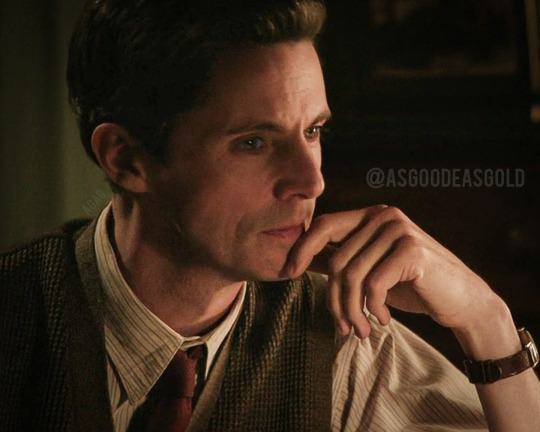
Freud's Last Session - my review
I finally got to watch Freud's Last Session after being immersed in this film and talking about it for over a year! I loved it, it is beautiful 💗
Both actors did a magnificient turn. Matthew was truly mesmerising, his presence filled the whole screen and he conveyed such an incredible and nuanced range of emotions. You could read his face like a book, no words necessary. And when he did talk, the cadence and timbre (😉) of his voice was enthralling.
He said in interviews he wanted above all to convey C. S. Lewis's humanity and boy did he nail that. Kindness and compassion truly emanated from his character's every pore. I wanted to see more of his Lewis 💗💗.
Unlike some reviewers, I really enjoyed the flashbacks as I thought they added to the characters and understanding of their journey. But for me the sub plot with Anna and her friend was a bit drawn out and detracted from what was going on with the two main characters (although beautifully acted and an interesting story on its own merit).
As for the main show, the two giants Freud and Lweis talking to each other, that was amazing and I could also have had more. However, I felt the dialogue was quite fast-paced and I now want to read the script and watch the film again so that I fully absorb what they were saying. I deliberately watched without subtitles (I always need subtitles lol) so that I could just soak up the film through first impressions.
The cinematography by Ben Smithard was stunning, particularly the play of light and dark (chiaroscuro, one of my favourite things 😁). The losing of light as the day progessed (with the sound of the rain pattering outside) beautifully conveyed the passing of time, Freud and Lewis getting absorbed into their talk, their growing intimacy and the momentousness of their day together. And the woodland scenes with Lewis were truly magical.
The set design by Luciana Arrighi, particulary Freud's meticulously recreated office) was astounding in its detail and beauty. The opening sequence and panning shot of Freud's antique objects was so gorgeous.
Congratulations to all involved, a beautifully crafted film.
I will be posting edits from the film but will try and keep them spoiler-free until most of us have seen it.
📷 Freud's Last Session, Sony Pictures Classics, my edit
26 notes
·
View notes
Text






Sense and Sensibility (1995)
Director: Ang Lee DOP: Michael Coulter Production Design: Luciana Arrighi
#cinematography#film stills#visual storytelling#sense and sensibility#ang lee#kate winslet#greg wise#90s movies#90s films
8 notes
·
View notes
Text
In 1944 Poland, a Jewish shop keeper named Jakob is summoned to ghetto headquarters after being caught out after curfew. While waiting for the German Kommondant, Jakob overhears a German radio broadcast about Russian troop movements. Returned to the ghetto, the shopkeeper shares his information with a friend and then rumors fly that there is a secret radio within the ghetto. Credits: TheMovieDb. Film Cast: Jakob Heym: Robin Williams Mischa: Liev Schreiber Lina Kronstein: Hannah Taylor-Gordon Max Frenkfurter: Alan Arkin Avron: Michael Jeter Kowalsky: Bob Balaban Prof. Dr. Kirschbaum: Armin Mueller-Stahl Lina’s Mother: Éva Igó Linas’s Father: István Bálint Fajngold: Mark Margolis Herschel: Mathieu Kassovitz Preuss: Justus von Dohnányi Hocker: Kathleen Gati …: Zofia Saretok Film Crew: Original Music Composer: Ed Shearmur Director of Photography: Elemér Ragályi Casting: Kerry Barden Makeup Artist: Cheri Minns Casting: Billy Hopkins Director: Peter Kassovitz Costume Design: Wiesława Starska Editor: Claire Simpson Makeup Artist: Katalin Jakots Producer: Steven Haft Screenplay: Marsha Garces Williams Novel: Jurek Becker Casting: Suzanne Smith Crowley Screenplay: Didier Decoin Production Design: Luciana Arrighi Script Supervisor: Nada Pinter Hairstylist: Gabriella Németh Visual Effects Supervisor: Kelley Ray Makeup Artist: Maja Gawinska Movie Reviews:
0 notes
Text

#starstruck 1982#gillian armstrong#margo lee#jo kennedy#brian thomson set design#luciana arrighi#terry ryan#costume design
2 notes
·
View notes
Photo





My Brilliant Career (1979), dir. Gillian Armstrong
Production Designer: Luciana Arrighi
#my brilliant career#filmstruck#production design#film stills#cinematography#gillian armstrong#set design#Luciana Arrighi#feminist films#women directors
291 notes
·
View notes
Text
I went on vacation to Devon last year and we stayed in the house where Ang Lee shot Sense and Sensibility so here’s a long photo post that’s like a year overdue
I’m putting it under the cut because I don’t want to clog up anyone’s feed, but basically I went around the house trying to recreate shots to see what Ang Lee and Luciana Arrighi (the production designer) did. Full disclosure: I’m not a huge Jane Austen fan, and though I’m very very fond of Ang Lee, I wouldn’t have gone on holiday to this house just to stalk his shot list. The film did inspire us to look into staying at Efford House, though, because it’s unbelievably gorgeous there and it’s the perfect place to go on vacation during a pandemic and I still can’t believe we got to spend a week in this place:

Anyway, if you want to talk directing and production design choices, please @ me, but unfortunately I can’t offer you much in the way of Jane Austen nerding out, sorry to disappoint.
Like I said, I tried to recreate every shot that was filmed in the house. I’m not posting every single one because this post would be a thousand miles long, and it’s worth noting that while I did my best to line up the shots, I was working with a different lens and camera size than Michael Coulter (the cinematographer) so they aren’t always perfect.
First, here’s the house as it is in the film:

And as it is now:

You can see they added some columns over the front door for the film to age the house a bit architecturally, and put shutters on the ground and top floor windows to make the house look smaller. The place is actually fairly large, it sleeps 12, and I remember reading about Ang Lee having to work around the size issue to make the place feel more cramped and small enough to fit the story. There are no shots in the film of the side of the house, and with good reason:

I don’t know if production design put in a gate at the front of the house for filming, I haven’t found much information on what changes they made, but this fence and gate:

are not there anymore. There are also paving stones leading up to the house that can be seen in the film, which aren’t there (and would be visible as the lawn is cut short now). There’s a hedge, but yeah, no gate. If there’s a wooden fence under there, I couldn’t find it.

There’s something that looks like it once was a gate in its heyday being eaten up slowly by plant life on the ground next to the hedge:

Weirdly enough, it’s not the same one as in the film (the wood slats are assembled in a different pattern). So, you know. ¯\_(ツ)_/¯
The interior of the house is wildly different now, not least of all because there’s carpeting everywhere. The most impressive thing production design did was in the larger of the two sitting rooms, but we’ll get to that in a sec.


There’s now a second door at the front entrance (and it’s good there is, the house gets COLD), but you can see that doorknobs are still the same and are probably what were originally installed when the house was built. I don’t know for sure, I’m not a doorknob historian.
Don’t quote me on this, but I’m guessing the wood paneling on the bottom half of the walls was put there by production design. It’s seen throughout the house in the film and I found them nowhere when we were there, except in the smaller sitting room where it looked exactly the same as in the film (photos further down). It’s possible production design used the bit in the smaller sitting room as inspo for the rest of the house, or that the house was renovated and most of this paneling was removed (though why, I don’t know, it looks great and you can put little things on top of it or rest picture frames, why would you remove it???).
They only shot in three rooms of the house - the two sitting rooms and one of the upstairs bedrooms - and one scene on the stairs of the first floor. The upstairs bedroom was used for both Eleanor and Marianne’s bedroom, as well as a washroom:




The fireplace was almost definitely a prop. There was no visible sign of one behind the wardrobe, and no fireplace to share a flue on the other side of the wall. That wall is completely flat, in fact, so production design really went all out with this room. And you can see the door just at the edge of the shot of Marianne washing Margaret that’s in the picture below it. There’s no other room in the house with this configuration, and with two large windows and plenty of floor space, the room is perfect for shooting. Again, no sign anymore of the wood paneling.
The camera turned around and the room was re-dressed with a bed and hangings etc. to look like the Dashwood girls’ bedroom:


You can just make out the door over Emma Thompson’s shoulder, and the window and seat are the same. Here, too, shutters were added to the windows to give the space a slightly more cramped feel (I assume. Again, I haven’t found any info on renovations, but I don’t see why window shutters would have been removed, and they’re a great way to make the house feel smaller, which was Ang Lee’s goal).
And my faaaaaavorite shot:

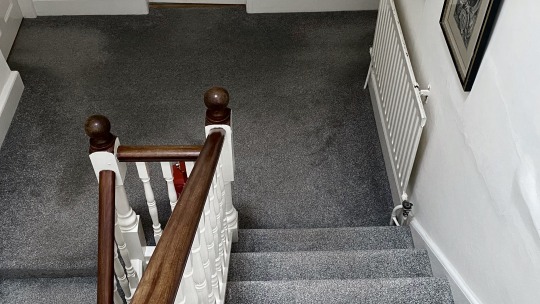
I wouldn’t be at all surprised if Ang Lee used natural light for this shot. I’ve been in love with it for years - the way the light seems to almost drape over the space, this beautiful diffused British light that trails Eleanor through the whole film, always just out of reach. And then in this shot it wants to envelop her, and she blocks it out with her hat. Love it. LOVE IT. Anyway, I couldn’t wait to find this spot in the house when we arrived, and as soon as I did, I looked up and realized: there’s a skylight! It���s just perfect. Emma Thompson wrote this scene into the script, and tbh I was surprised when I read it because if you’d told me Ang Lee decided when he scouted the location that he had to do something with this literally glorious light and made her add this moment in, I would believe it. Also, I’m assuming production design added the larger, more square bits to the banister to give them a more period look. Unless someone decided to renovate specifically that bit of the house in the last 25 years, which seems... unlikely.

I MEAN. After a week there I could tell you exactly what time of day that scene was shot and in what weather (though to be fair, we stayed there in late May, which overlapped with the 1995 shooting schedule, as it turns out. I found a copy of Emma Thompson’s production diary a few years ago and it’s fantastic).
Next I have to include this mostly because it’s just stunning:


This is what you see when you open the front door. I have no idea how anyone got me to leave this place. I think there are still claw marks in the door from where I tried to hang on and stay there forever. And just a fun thing:


I think that’s the same chair? It was in the sitting room, but I wouldn’t be surprised if it had been in the house a couple decades ago and someone grabbed it and stuck it back there just to crowd the background subtly and, again, make the house look more cramped than it is. So I moved it into the stairwell for a photo (oh yeah, that door leads to the main stairs, there’s also a second set of stairs further back which would have been for the servants and leads from the kitchen).

Anyway, hello chair!
Moving on, again, you can see there’s a second door at the front entrance. The doors and their frames are the same, and you can see the shelves of the smaller sitting room through the doorway:


The other end of this room is the most interesting bit of set dressing in the film:


You can see in both these shots that there’s a large grey fireplace with two built-in shelves on either side of it. (Also, I don’t know how Michael Coulter got that shot of Greg Wise, I could barely recreate it with an iphone and just myself pressed against a wall. How he did that with a film camera is beyond me, because they couldn’t remove the wall obviously and there’s maybe three feet between the wall and where Greg Wise would have been sitting at that angle??) Anyway, here’s the room as it is:

That entire wall was fake! It was a magnificent lie! What! You can see the indent in the wall where there would have been room to install a false front with fake built-in shelves. In the shot below, the shelves are flush with the wall, but you can just make out a shadow between them and where the real wall ends:

Also, if you look really closely at the fireplace in the screenshot from the film, it’s more spacious than in real life, because the entire thing is covered in the false wall and a fake fireplace that has been aged to look more careworn (and isn’t made of wood).
In reality, the door on the right leads to a toilet and sink that runs the length of the room and since there are no signs of an addition to the house and the door and handle look fairly old, I think it’s fair to assume that this door was also covered up by the false wall and shelving. It’s a brilliant aesthetic move that adds balance to the room, as well as paralleling it with the other sitting room (keeping in line with the sensibility theme that runs through the film), as well as aging it and giving it character.
Honestly, I love the idea that Luciana Arrighi looked around this room and went, “ok, this doesn’t work, so we’ll just make this entire part of the room ourselves.” I think the cast didn’t even know it was fake? Emma Thompson wrote in her diaries about how she knew the production design team did a massive amount of work on the house, but she didn’t list any specifics. I also think it’s great that the truth of this space is that where you see a beautiful pre-regency built-in shelf in the film, in real life there’s a door to... a toilet.
Finally, there’s the smaller sitting room:


Those built-in shelves are real and probably original to the house (again, also not a shelf-historian). You can see the detail work on the fireplace down to the pattern carved into it and see it’s the same, and the wood paneling that shows up in the rest of the house in the film but not in present day runs along this wall too.


Again, you can see the wood paneling. Ang Lee really darkened the room with those window shutters. It’s clearly bright in here, especially since the current wallpaper is beige with stripes, and the light grey in the film would have reflected light better with all the windows exposed. If you look closely, again, the doorknob is still the same.


The shutters make a huge difference, both in the sense of space and the amount of light.
And finally, the view and the front lawn, just because it’s stunning and because I love this tree more than any other tree I’ve ever loved:

Margaret’s tree house isn’t there anymore, of course, but neither are the two pines (I think?) that it was built onto. I hope they’re OK (they’re probably not OK). There are even lawn chairs for when you and a friend are recovering from your bout of dramatic, near-fatal illness:


Bonus content:

I really love this little moment of Margaret being Margaret and was super jealous because that estuary looked like it had some good poking mud.

It’s seductive but treacherous non-ground. It gets very muddy as you near the edge (they must have put boards down for Emilie François) and I temporarily lost a shoe in my first attempt before I figured out how to walk on the squidgy marshy bits. But I got there in the end!
youtube
Confirmed: excellent poking mud.
4 notes
·
View notes
Photo

Murray Head and Glenda Jackson in Sunday Bloody Sunday (John Schlesinger, 1971) Cast: Peter Finch, Glenda Jackson, Murray Head, Peggy Ashcroft, Tony Britton, Maurice Denham, Bessie Love, Vivian Pickles, Frank Windsor. Screenplay: Penelope Gilliatt. Cinematography: Billy Williams. Production design: Luciana Arrighi. Film editing: Richard Marden. Music: Ron Geesen. Considering that it was made more than 50 years ago, John Schlesinger's Sunday Bloody Sunday is blithely matter-of-fact about having as one of its protagonists a gay man sleeping with a bisexual man who is also sleeping with a woman. But I remember seeing Sunday Bloody Sunday when it first came out, and there were no ripples of shock running through the theater when Daniel (Peter Finch) kissed Bob (Murray Head). This was the early 1970s, when the full effect of the sexual revolution was making itself known; Stonewall was two years behind us, and being openly gay was becoming possible if not always practical. So Sunday Bloody Sunday engendered little talk other than about the fine quality of the acting -- with some expressing reservations about Head ("I don't know what either of them saw in him," said one mostly closeted gay friend) -- and the general feeling that it was a satisfying entertainment for grownups. I think the film has grown in stature over the years, as few of Schlesinger's movies have: Darling (1965) and Midnight Cowboy (1969) have dated badly. Much of the credit for Sunday Bloody Sunday must go to Penelope Gilliatt's screenplay, which seems to have held in check some of the sourness that afflicts those earlier films. Even in the scenes that satirize the chaotic permissiveness of the Hodson household, in which among other things the unruly children are allowed to smoke pot, the point of view is provided by Alex (Glenda Jackson) and Bob, who are babysitting these little monsters, providing them with the affection and attention they so clearly need. Granted, some of the maturity in the film's portrayal of then-unconventional sexuality may lie in the fact that it was made before AIDS tested the straight world's tolerance for nonconforming behavior. But having weathered that long crisis, we can now see Sunday Bloody Sunday for what it is: a film about love and lust and loneliness, and a very good and moving one at that.
4 notes
·
View notes
Photo
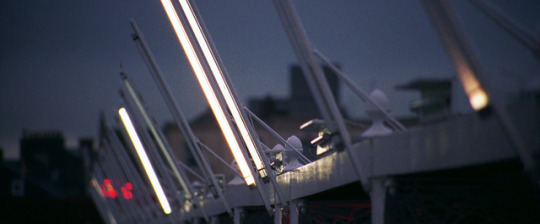

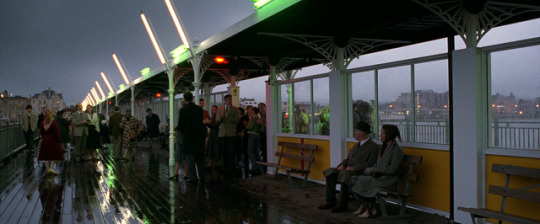



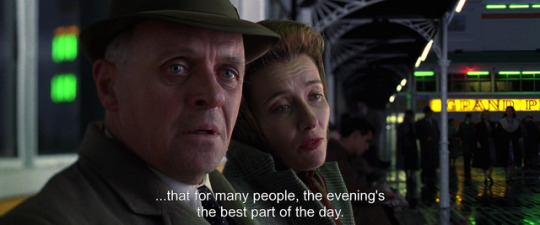
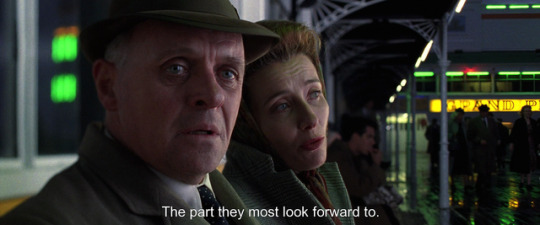
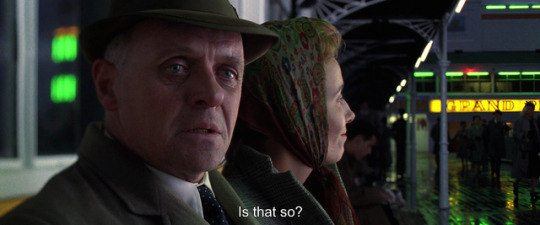

The Remains of the Day (James Ivory, 1993).
#the remains of the day#the remains of the day (1993)#james ivory#anthony hopkins#emma thompson#tony pierce-roberts#andrew marcus#luciana arrighi#kazuo ishiguro#ruth prawer jhabvala#sesión de madrugada#sesiondemadrugada#movie stills#movie frames
97 notes
·
View notes
Text
Movies
An ever expanding list of Bluebeard movies.
1901: Barbe-bleue (Georges Méliès, 1901)
1923: Bluebeard’s 8th Wife, starring Gloria Swanson (Sam Wood, 1923)
1925: Miss Bluebeard, starring Bebe Daniels (Frank Tuttle, 1925)
1936: Barbe-bleue (Jean Painlevé, 1936)
1938: Bluebeard’s Eighth Wife, starring Claudette Colbert and Gary Cooper (Ernst Lubitsch, 1938)
1940: Rebecca, starring Joan Fontaine and Laurence Olivier (Alfred Hitchcock, 1940)
1941: Suspicion, starring Cary Grant and Joan Fontaine (Alfred Hitchcock, 1941)
1944: Bluebeard, starring John Carradine (Edgar G. Ulmer, 1944)
1944: Gaslight, starring Charles Boyer and Ingrid Bergman (George Cukor, 1944)
1947: Monsieur Verdoux, starring Charles Chaplin (Charles Chaplin, 1947)
1948: Secret Beyond the Door, starring Michael Redgrave and Joan Bennett (Fritz Lang, 1948)
1950: Bluebeard’s Six Wives, starring Totò (Carlo Ludovico Bragaglia, 1950)
1951: Barbe-Bleue, starring Hans Albers (Christian-Jaque, 1951)
1951: Juliette, or Key of Dreams (Marcel Carné, 1951)
1955: Los lios de Barba Azul, staring Germán Valdés, Amanda del Llano & Verónica Loyo (Gilberto Martínez Solares,1955)
1960: Bluebeard’s Ten Honeymoons, starring George Sanders (W. Lee Wilder, 1960)
1963: Herzog Blaubarts Burg, (Michael Powell, 1963)
1963: Landru, starring Charles Denner, Michèle Morgan, and Danielle Darrieux (Claude Chabrol, 1963)
1966: Bluebeard's Last Wife staring Luciana Arrighi, Meg Wynn Owen & John Preston (John Stoddart, 1966)
1972: Bluebeard, starring Richard Burton, Joey Heatherton, Raquel Welch, and Virna Lisia (Edward Dmytryk, 1972)
1979: Ochen’ siniya boroda (Very Blue Beard) (Vladimir Samsonov, 1979)
1986: La Barbe-bleue, (Alain Ferrari, 1986)
1988: Duke Bluebeard’s Castle, staring Robert Lloyd, Elizabeth Laurence & John Woodvine (Leslie Megahey, 1988)
1993: The Piano, starring Holly Hunter, Harvey Keitel and Sam Neill (Jane Campion, 1993)
2005: Bluebeard's Wife, staring Joan Barber, Norm Golden & Isabel Irene Bass (Bobby Webster, 2005)
2008: Blue Beard, starring Anatoly Kotenev, Oleg Kharitonov, Anna Miklosh and Dmitry Isaev (Roman Fokin, 2008)
2009: Barbe Bleue, starring Dominique Thomas and Lola Créton (Catherine Breillat, 2009)
2013: Barbazul, starring Jac Avila, Mila Joya, Amy Hesketh and Veronica Paintoux (Amy Hesketh, 2013)
2015: Crimson Peak, starring Mia Wasikowska, Tom Hiddleston and Jessica Chastain (Guillermo del Toro, 2015)
2015: Ex Machina, starring Domhnall Gleeson, Alicia Vikander and Oscar Isaac (Alex Garland, 2015)
2018: Elizabeth Harvest, starring Abbey Lee and Matthew Beard (Sebastian Gutierrez, 2018)
#movies#film#film list#bluebeard#fairytales#fairytale#fairy tale#fairy tales#barbe bleue#blue-beard#blue beard#barbe-bleue#barbebleue#barba azul#barba-azul#barbaazul#fantasy#bluebeard's wife#wife#husband#castle#romance#love
15 notes
·
View notes
Text
“SENSE AND SENSIBILITY” (1995) Review
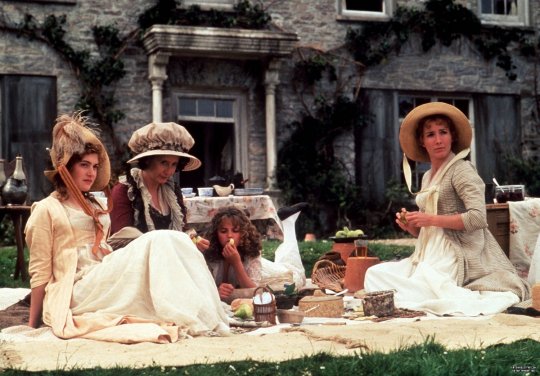
"SENSE AND SENSIBILITY" (1995) Review The year 1995 saw the beginning of an onslaught of Britain and the United States’ love affair with British author, Jane Austen. A love affair that has not abated after twenty-three (23) years. In 1995, the BBC aired Andrew Davies’ miniseries adaptation of Austen’s most famous novel, ”Pride and Prejudice”. And later that year, Hollywood released its adaptation of another Austen, ”Sense and Sensibility” - which I had just recently watched.
Directed by Ang Lee, ”SENSE AND SENSIBILITY”, starred Emma Thompson (who also wrote the screenplay), Kate Winslet, Alan Rickman and Hugh Grant. The story centered around Elinor (Thompson) and Marianne (Winslet), two daughters of Mr. Dashwood (Tom Wilkinson) by his second wife (Gemma Jones). They have a younger sister, Margaret (Emilie François), and an older half-brother named John (James Fleet). When their father dies, the family estate passes to John, and the Dashwood women are left in reduced circumstances. The story follows the Dashwood sisters to their new home, a cottage on a distant relative's property (Robert Hardy), where they experience both romance and heartbreak. The contrast between the quiet and sensible Elinor and the extroverted and occasionally impetuous Marianne is eventually resolved as each sister finds love and lasting happiness. This leads some to believe that the story’s title described how Elinor and Marianne find a balance between sense and sensibility in life and love. Producer Lindsay Doran made an excellent choice in selecting Lee to direct the film. First of all, he drew some excellent performances from his cast - especially from Thompson, Winslet, and Rickman. Lee also effectively drew filmgoers back into Regency England without allowing the film to resemble some kind of stiff painting or a museum piece. Although he initially had trouble with dealing with Western-style of filmmaking – especially in dealing with British cast members who questioned his direction and made suggestions regarding shots. He could be rather authoritarian with the cast, especially with Hugh Grant. The actor ended up calling him ”the Brute” behind his back. But Lee and the cast eventually got used to each other. Lee was also responsible for insisting that Thompson play the oldest Dashwood sister. And he Lee ordered Winslet to read poetry and novels from the late 18th century and early 19th century in order to get her to connect to Marianne’s romantic nature. And to give the movie its emotional core, he asked both Thompson and Winslet to room together during production. The two actresses remain close friends to this day. Not only was Lee ably assisted by his superb cast, but also by crew members such as costume designers Jenny Beavan and John Bright, production designer Luciana Arrighi, set decorator Ian Whittaker, art directors Philip Elton and Andrew Sanders; and cinematographer Michael Coulter, whose photography beautifully captured the English countryside in all of its glory. I especially have to give kudos to Coulter’s photography and Arrighi’s production design for a beautiful re-creation of Regency London. I also enjoyed composer Patrick Doyle’s score for the film. His use of John Dowland’s song, "Weep You No More Sad Fountains" as Marianne’s own theme song struck me as very impressive. But I have to especially give kudos to Emma Thompson for her marvelous adaptation of Austen’s novel. It may not have adhered exactly to the novel, but I found it well written, lively and paced just right. With the exception of two performances, I felt more than impressed with the cast. When Ang Lee had signed on as the movie’s director, he immediately suggested that Emma Thompson portray the oldest Dashwood sister, Elinor. Thompson considered herself too old for the role, considering that Elinor was at least 19-20 years old in the novel. But Lee suggested that she increase Elinor’s age to 27 in the screenplay, which would also make her distress at being a spinster easier for contemporary audiences to understand. Frankly, I feel that Lee made a good choice. Emma Thompson gave a superb performance as Elinor Dashwood, whose practical mind led her to act as the family’s de facto leader, following her father’s death. She also brilliantly conveyed Elinor’s emotional nature behind a mask of reticence via her eyes and various expressions. Kate Winslet had no need to be subtle as the more openly emotional Marianne Dashwood. Winslet was at least 20 years old when she filmed ”SENSE AND SENSIBILITY’. Yet, even at that tender age, Winslet proved that she had the talent and acting chops to portray the very complex Marianne. And yet, she managed to convey all aspects of Marianne’s personality – romantic, willful, emotional and sometimes a bit self-involved - with surprising subtlety. I found Alan Rickman impressive as one of the Dashwoods’ new neighbors, the quiet and dependable Colonel Christopher Brandon. I enjoyed the subtle manner in which Rickman expressed Brandon’s reluctance in expressing his love for Marianne, due to her feelings for another man. That other man proved to Greg Wise, who gave a surprisingly effective performance as the dashing, yet rakish John Willoughby. Wise has always struck me as a solid, but not particularly an exceptional actor, but I must admit that I consider Willoughby to be among his best performances. The movie’s supporting cast also included Robert Hardy and the late Elizabeth Spriggs, who gave amusing performances as Sir John Middleton, the Dashwoods’ cousin and benefactor; and Mrs. Jennings, Sir John’s mother-in-law. Gemma Jones was excellent as the emotional and sometimes girlish mother of the Dashwood sisters. I was also impressed by Harriet Walter, who portrayed the sisters’ shrewish sister-in-law, Fanny Dashwood. And Hugh Laurie gave a hilarious performance as the sardonic and long-suffering Mr. Palmer, Mrs. Jennings’ other son-in-law. And I must say that Imogen Stubbs also impressed me by her subtle performance as the cunning and manipulative Lucy Steele, who seemed to have a claim for the same man that Elinor Dashwood longs for. Speaking of Elinor Dashwood’s love, I finally come to the two performances that had failed to impress me. One of them belonged to Hugh Grant. He portrayed Edward Ferrars, one of Fanny Dashwood’s brothers that happened to be in love with Elinor and is claimed by the manipulative Lucy Steele as her fiancé. Remember his charming, yet modest performance in the hit 1994 comedy, "FOUR WEDDINGS AND A FUNERAL"? Well, his Edward Ferrars turned out to be an early 19th century version of that particular role. Grant simply gave the same performance, but with more stuttering and well . . . the same charm. What had been fresh and original in 1994, ended up as old news a year later in "SENSE AND SENSIBILITY". Fortunately, he managed to create strong chemistry with both Thompson and Emilie François, who portrayed the young Margaret Dashwood. And he managed to inject a good deal of subtle wit into his portrayal of the low-key Edward. But the one performance that really did nothing for me belonged to Imelda Staunton. She portrayed Charlotte Jennings Palmer, Mrs. Jennings’ daughter and Mr. Palmer’s wife. Now I am a fan of Stauton, but I cannot say the same about her portrayal of Charlotte Palmer. I realize that the character was supposed to be annoying, but one could say the same about Sir John and Mrs. Middleton. But whereas I found Robert Hardy and Elizabeth Spriggs’ performances amusing and rather funny at times, Staunton’s slightly over-the-top portrayal of Charlotte Palmer ended up irritating the hell out of me. I understand that Andrew Davies had produced his own version of the Austen novel back in 2008. I cannot deny that the three-part miniseries is first rate. There are two other adaptations of Austen's 1811 novel that I have enjoyed. However, I still believe that this particular version is superior. It came as no surprise to me that it earned seven (7) Academy Award nominations and won one (1) for Thompson’s Adapted Screenplay. ”SENSE AND SENSIBILITY” is one movie I could watch over again without ever getting tired of it.
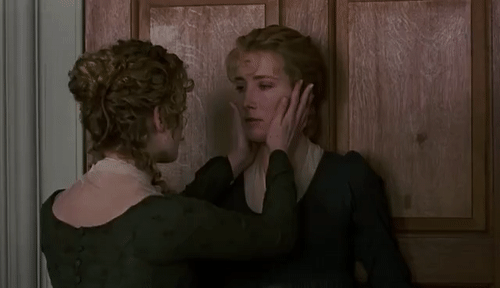
#jane austen#sense and sensibility#sense and sensibility 1995#ang lee#emma thompson#kate winslet#alan rickman#hugh grant#greg wise#gemma jones#emilie francois#elizabeth spriggs#robert hardy#harriet walter#james fleet#imelda staunton#hugh laurie#imogen stubbs#period drama#costume dramas#elinor dashwood#marianne dashwood
3 notes
·
View notes
Text
Angelica (2015)
Freestyle Digital Media has acquired the gothic drama Angelica, written and directed by Teeth‘s Mitchell Lichtenstein and starring Jena Malone (Sucker Punch, The Hunger Games), two-time Academy Award nominee Janet McTeer (Albert Nobbs, Tumbleweeds) and Ed Stoppard (The Pianist). It’s slated for release on VOD and in limited theaters November 17th. Produced by Joyce Pierpoline (Teeth), the film is based on the novel by Arthur Phillips with the same name. Angelica first premiered as an official selection at the 2015 Berlin Film Festival.Aside from its talented cast, a team of seasoned artists collaborated on the movie, including two-time Academy Award nominee cinematographer Dick Pope (for Mr. Turner and The Illusionist), Academy Award nominee costume designer Rita Ryack (Casino, Apollo 13) and Academy Award winning production designer Luciana Arrighi (Howard’s End). Two-time César winner Zbigniew Preisner also composed the haunting score. (source: Bloody-disgusting.com )
Press-kit from Mitchell Lichtenstein website ---> This post
James Norton plays a supporting role as Harry (IMDB), Joseph’s colleague (press kit) - Gif from the trailer

Presented at the 2015 Berlin International Film Festival
Indiewire.com review
Variety review
Hollywood Reporter review
Official Trailer 2017 (YouTube)
Official Teaser (YouTube) Clip 1 (YouTube) Jena Malone, Janet McTeer Clip 2 (YouTube) Jena Malone, Janet McTeer Clip 3 (YouTube) Jena Malone, Eliza Holland Madore
16 notes
·
View notes
Text
Gillian Armstrong marks My Brilliant Career's 40th anniversary | The Examiner
news, local-news, Tasmania, Launceston, BOFA, Gillian Armstrong, women in film, My Brilliant Career
When renowned director Gillian Armstrong was studying film at college the fact she was a woman was not an issue. However, once she had graduated she saw how difficult it was for her peers when they were pitching projects and meeting with producers and investors. Armstrong will visit Launceston for the Tasmanian Breath of Fresh Air Film Festival this weekend, speaking about women in film, film-making and her life at the Brilliant Careers, Strong Women session on Sunday. IN OTHER NEWS: While she has received "lots of support for many years", others in film have not, which meant Armstrong became an advocate for the industry's women. "Because I was involved I had a look at what was going wrong. It's not a level playing field," she said. "When I went to film school we didn't feel odd. The classes were about 50/50 [men and women] and often more women won awards, but they were not getting their foot in the door. "They're not getting that initial break in the first four years. That's where we see so many women disappear." Film festivals like BOFA are helping to turn that tide, with Armstrong saying "everything people do to honour women directors is great". "I am delighted the 2019 BOFA Film Festival has 55 per cent of its films either directed by or about women... I am sad to say, despite the numbers of award-winning female film graduates [the number of women directors] is still a sorry 18 per cent," she said. "I am disappointed the figures are so low." Armstrong is also marking the 40th anniversary of her film My Brilliant Career at the festival, with a special red carpet cocktail party at Drysdale before the screening on Saturday night, where she will catch up with the film's male lead Sam Neill. At its release My Brilliant Career was the first feature-length movie to be directed by a woman in Australia in almost 50 years. "It's a really rich and powerful story. Judy Davis and Sam Neill are extraordinary in it. Their charisma and star quality is there," Armstrong said. "I'm very proud of it." It also featured Margaret Fink as producer, screenplay by Eleanor Whitcombe, production and costume design by Luciana Arrighi, Jane Scott as line producer and lead actor Judy Davis. Armstrong has a connection to Tasmania beyond the festival - her mother was a trainee teacher at Queenstown, on the West Coast, and her parents met at Deloraine, where her father was staying in a boarding house. "I'm really delighted with my [Tasmanian] connection. I'm looking forward to coming."
https://nnimgt-a.akamaihd.net/transform/v1/crop/frm/yC9jte9QqwMBd4dfMaFtRK/04fdc2a0-0354-4b66-8fcc-0ce18338a2ab.jpg/r0_65_1274_785_w1200_h678_fmax.jpg
May 16 2019 - 11:58AM
Gillian Armstrong marks My Brilliant Career's 40th anniversary
When renowned director Gillian Armstrong was studying film at college the fact she was a woman was not an issue.
However, once she had graduated she saw how difficult it was for her peers when they were pitching projects and meeting with producers and investors.
Armstrong will visit Launceston for the Tasmanian Breath of Fresh Air Film Festival this weekend, speaking about women in film, film-making and her life at the Brilliant Careers, Strong Women session on Sunday.
IN OTHER NEWS:
While she has received "lots of support for many years", others in film have not, which meant Armstrong became an advocate for the industry's women.
"Because I was involved I had a look at what was going wrong. It's not a level playing field," she said.
"When I went to film school we didn't feel odd. The classes were about 50/50 [men and women] and often more women won awards, but they were not getting their foot in the door.
"They're not getting that initial break in the first four years. That's where we see so many women disappear."
Film festivals like BOFA are helping to turn that tide, with Armstrong saying "everything people do to honour women directors is great".
"I am delighted the 2019 BOFA Film Festival has 55 per cent of its films either directed by or about women... I am sad to say, despite the numbers of award-winning female film graduates [the number of women directors] is still a sorry 18 per cent," she said.
"I am disappointed the figures are so low."
Armstrong is also marking the 40th anniversary of her film My Brilliant Career at the festival, with a special red carpet cocktail party at Drysdale before the screening on Saturday night, where she will catch up with the film's male lead Sam Neill.
At its release My Brilliant Career was the first feature-length movie to be directed by a woman in Australia in almost 50 years.
"It's a really rich and powerful story. Judy Davis and Sam Neill are extraordinary in it. Their charisma and star quality is there," Armstrong said.
"I'm very proud of it."
It also featured Margaret Fink as producer, screenplay by Eleanor Whitcombe, production and costume design by Luciana Arrighi, Jane Scott as line producer and lead actor Judy Davis.
Armstrong has a connection to Tasmania beyond the festival - her mother was a trainee teacher at Queenstown, on the West Coast, and her parents met at Deloraine, where her father was staying in a boarding house.
"I'm really delighted with my [Tasmanian] connection. I'm looking forward to coming."
Fast Facts
WHAT: Red Carpet Cocktail Party and Brilliant Careers, Strong Women session
WHEN: Saturday, May 18, at 5.30pm; and Sunday, May 19, at 2pm
WHERE: TasTAFE Drysdale campus, 93 Paterson Street, Launceston
INFORMATION: breath-of-fresh-air.com.au
0 notes
Photo





Interiors in My Brilliant Career (1979) dir. Gillian Armstrong
Production Designer: Luciana Arrighi
#my brilliant career#filmstruck#production design#set design#interiors#film stills#cinematography#gillian armstrong#women directors#feminist films
193 notes
·
View notes
Text
Manuela Donghi, Visto con i tuoi occhi, Giuliano Ladolfi Editore. Presentazione a Como, con Andrea Arrighi, Luciana Quaia, Beatrice Ricci, 27 aprile 2017
Manuela Donghi, Visto con i tuoi occhi, Giuliano Ladolfi Editore. Presentazione a Como, con Andrea Arrighi, Luciana Quaia, Beatrice Ricci, 27 aprile 2017
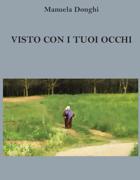
«Tutti i cassettini che abbiamo riempito in anni della nostra vita all’improvviso cominciano a svuotarsi e poco alla volta lì dentro non rimane più nulla. È come un trasloco lento e pesante, senza una ditta autorizzata che ti aiuti a spostare le cose più difficili e soprattutto in modo graduale. Ma soprattutto senza dei professionisti che ti permettano di tenere con te quello che vuoi…
View On WordPress
0 notes